Alice Springs Desert Park
Alice Springs Desert ParkFauna Flora Nature Theatre Nocturnal House
The Native Apricot (Pittosporum angustifolium), also known as Bush Apricot, has a number of common names across Australia. The fruit is not edible. This is not to be confused with the other commonly know Bush Apricot (Meiogyne cylindrocarpa), whose fruit is edible.
A drought hardy shrub/tree, it is found throughout arid and semi-arid inland Australia, occurring in low numbers. It has cream to yellow flowers when in bloom. The fruit is oval shape and yellow in colour, as seen here, although in some areas the fruit are more orange in colour. Inside the fruit are bright red sticky seeds.
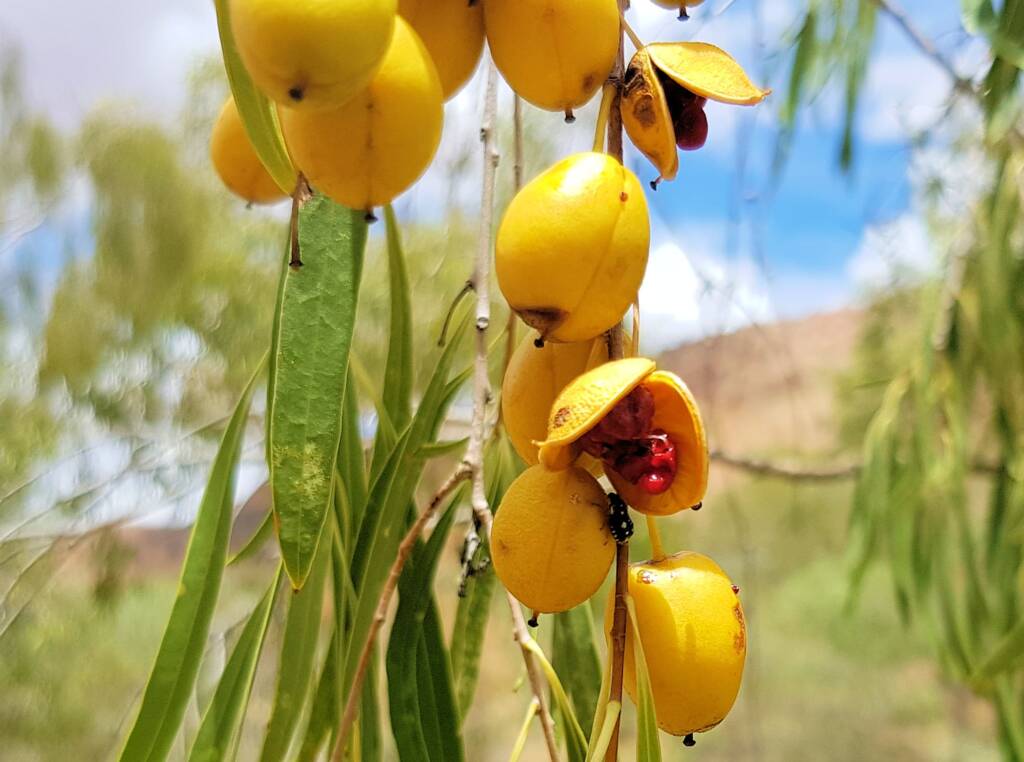
The fruit of this native plant is NOT EDIBLE. The plant itself is widely used in Aboriginal bush medicine as a treatment for coughs, colds, eczema, skin irritations, and sprained limbs. It has been reported that a compress of warmed leaves is said to induce lactation (induce milk flow in new mothers). Research on the medicinal uses of this plant continues.
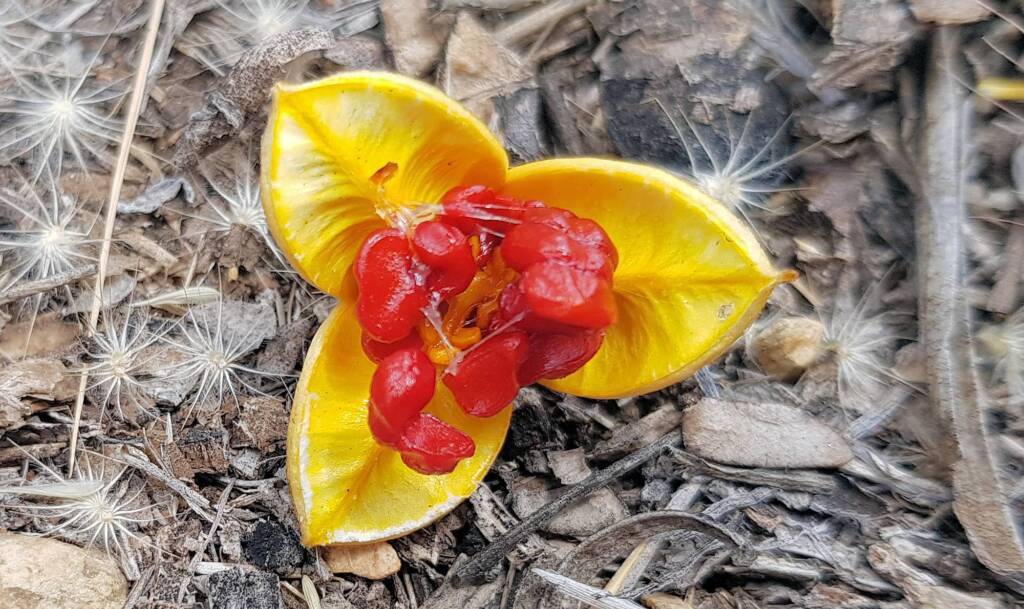
A more common use of this plant today, both fresh and dried, is as a tea (the plant’s slender leaves are steeped in hot water). Extreme care should be taken as there are several varieties of Pittosporum, and they are not all safe to consume.
Common name
The Native Apricot are known by various names, including Bush Apricot, Weeping Pittosporum, Western Pittosporum, Cattle Bush, Native Willow, Cheesewood, poison berry bush, berrigan, meemeei. It is also known as Gumbi Gumbi or Gumby Gumby. It can also be researched under the name Pittosporum phylliraeoides and P. phylliraeoides var. microcarpa.
| CAUTION Extreme care must be taken when identifying edible food plants and those used in bush medicine. Some bush foods are only edible at different stages of the plant cycle, or when treated appropriately. Bush medicine should only be used under the guidance of a qualified physician. Information here is only provided for research. You should always seek experts in the field to confirm the identification of the plant and whether they are edible or appropriate. |
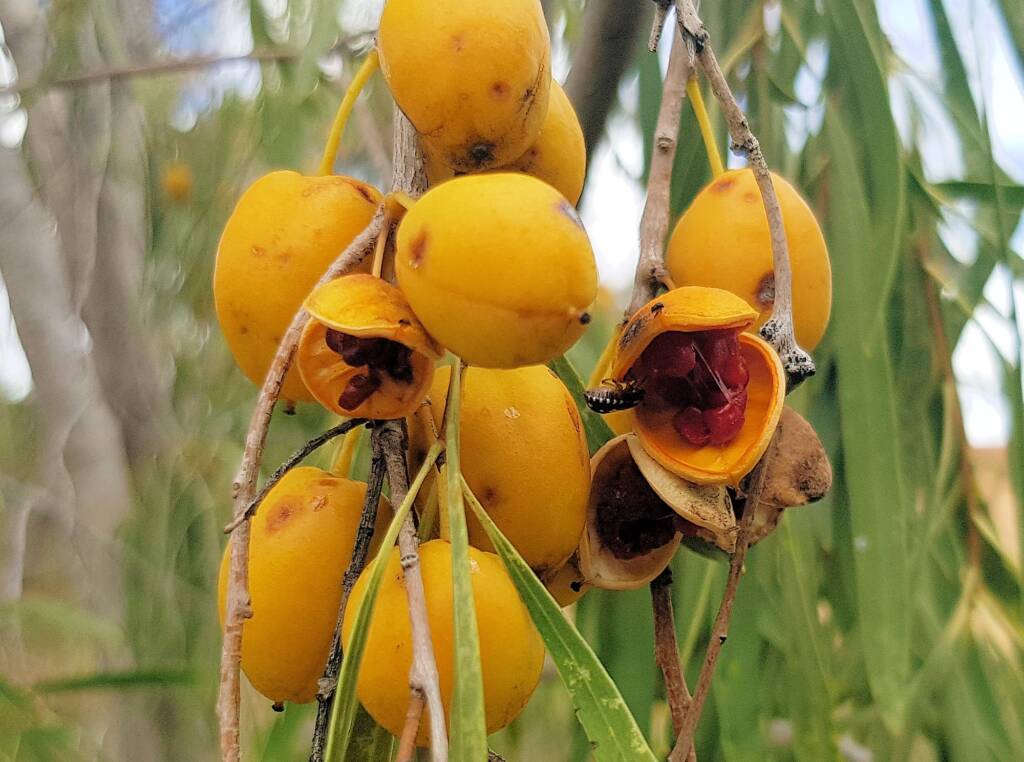
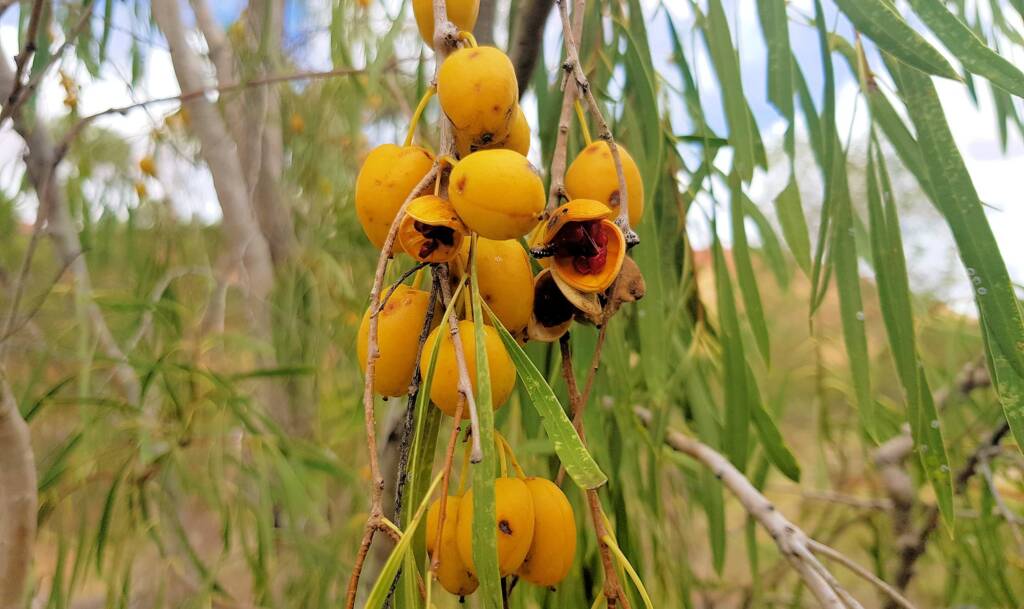
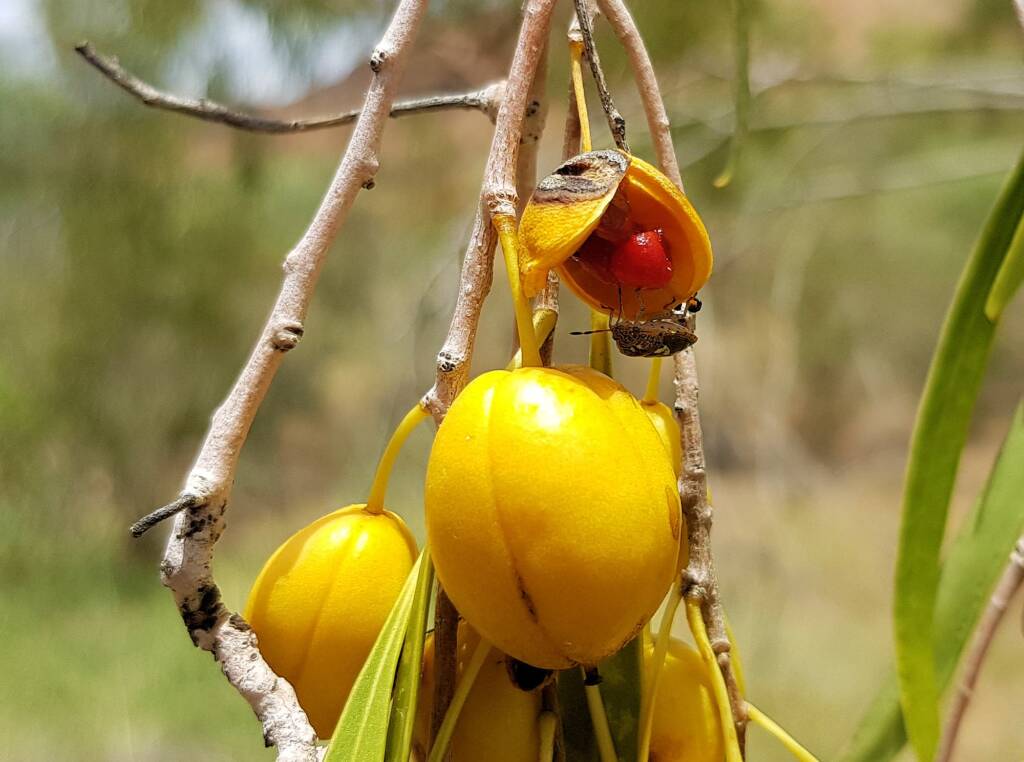
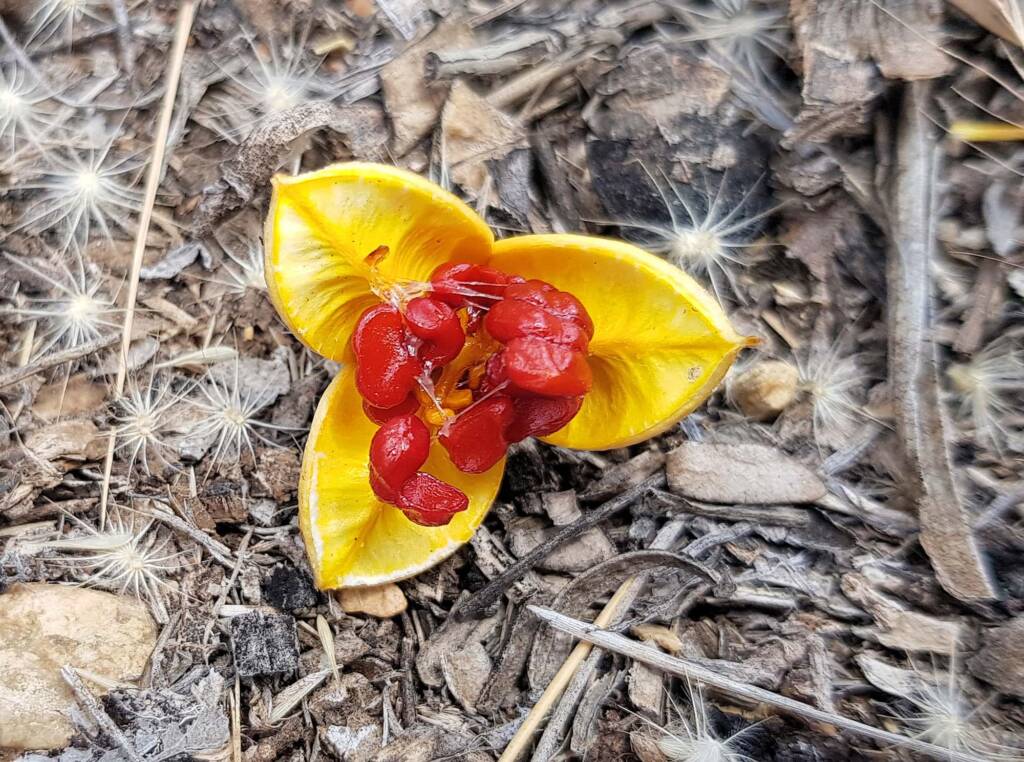
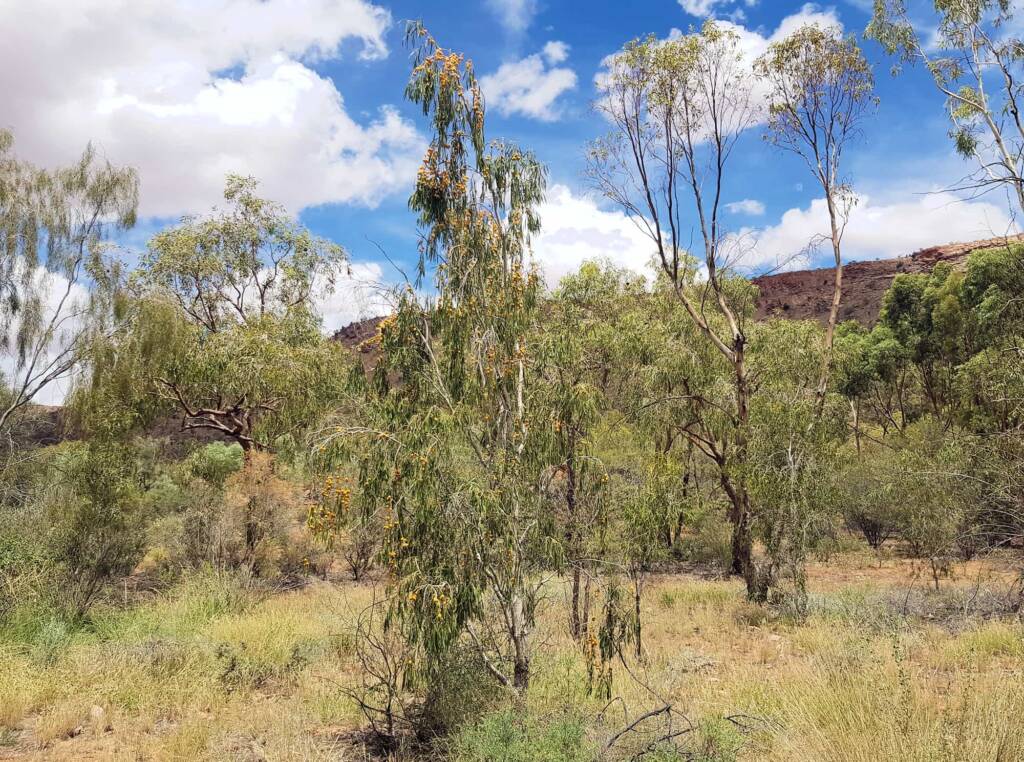
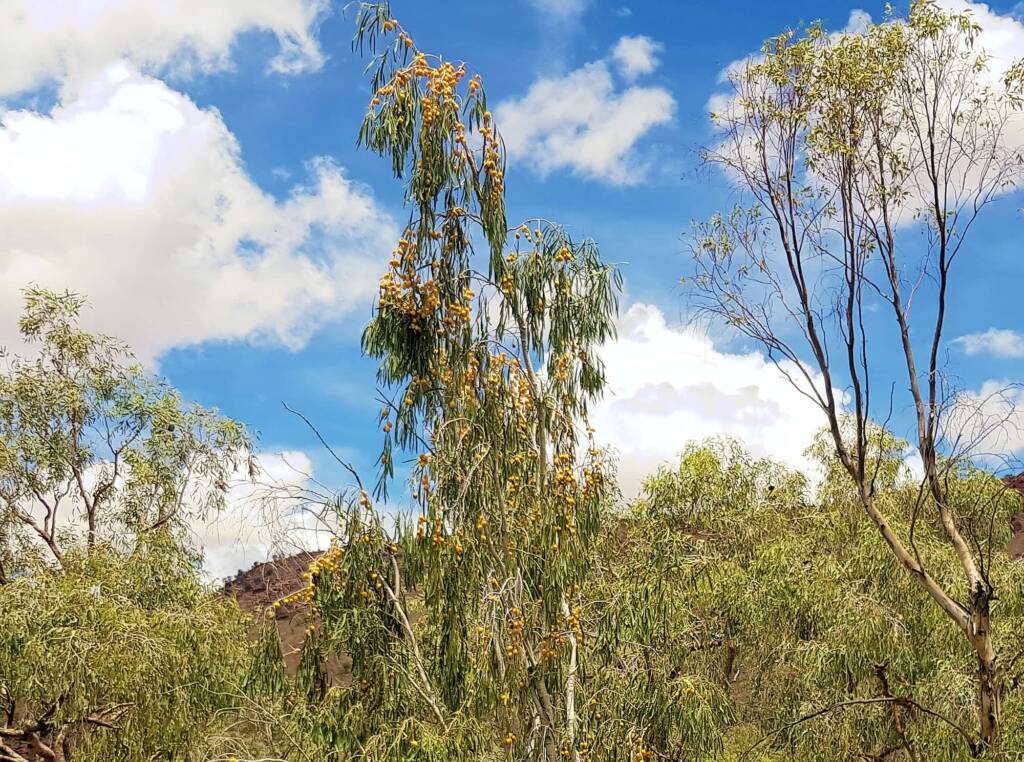
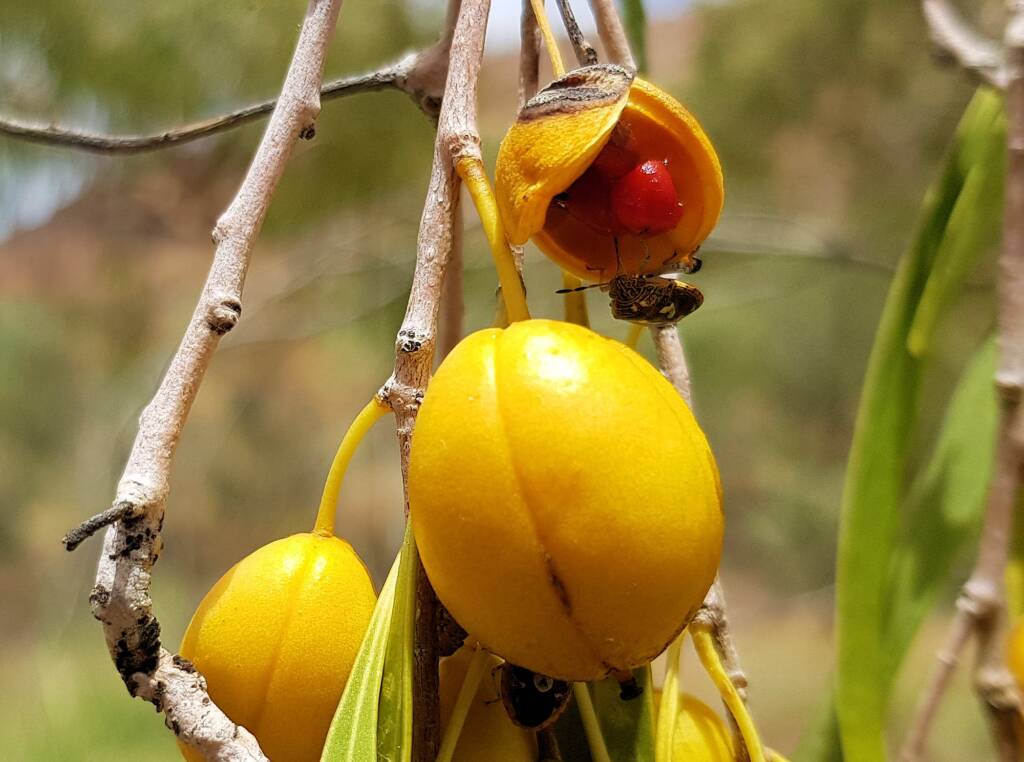
Images © CK Leel
- Scientific classification
- Kingdom: Plantae
- Clade: Tracheophytes
- Clade: Angiosperms
- Clade: Eudicots
- Clade: Asterids
- Order: Apiales
- Family: Pittosporaceae
- Genus: Pittosporum
- Species: Pittosporum angustifolium
Footnote & References
- Pittosporum angustifolium, https://en.wikipedia.org/wiki/Pittosporum_angustifolium (last visited January. 26, 2021).
- Indigenous medicine – a fusion of ritual and remedy, author Graham Jones, 5 December 2014, The Conversation, https://theconversation.com/indigenous-medicine-a-fusion-of-ritual-and-remedy-33142
- 10 bush medicines that have been curing people for generations, by Natalie Cromb, 7 June 2017, SBS NITV, https://www.sbs.com.au/nitv/article/2017/05/25/10-bush-medicines-have-been-curing-people-generations
ASDP FloraBatswing Coral Tree Blue Mallee Bush Banana Buttercup Pigweed Dead Finish Desert Grevillea Desert Oak Desert Raisin Field Lily Georges Indigo Golden Everlasting Honey Grevillea Kangaroo Grass Lamarchea sulcata Native Apricot Native Bluebell Native Cotton Bush Native Tomato Olearia ferresii Nicotiana megalosiphon subsp sessilifolia Parrot Pea Pink Everlasting Poached Egg Daisy Potato Vine Quandong Rattlepod Grevillea Red-bud Mallee Red Mulga Resurrection Fern Rough Halgania Sandover Lily Silkyheads Spearwood Bush Sturt’s Desert Pea Waddy-wood Walukara Weeping Spinifex White Spider Flower Wild Passionfruit Wildflower Display
Alice Springs Desert ParkFauna Flora Nature Theatre Nocturnal House
